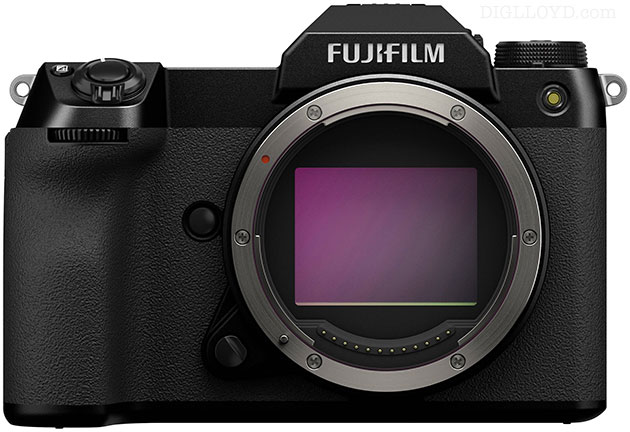Fujifilm GFX100S Pixel Shift Mode: How Good is it, and is it Viable for Non-Studio Photography?
re: Fujifilm GFX100S or Sony A1 or Sony A7R IV for Landscape, Studio, etc?
re: Canon EOS R Mirrorless System Now Has a Robust Lens Line
I have not tested the Fujifilm GFX100 pixel shift mode because it was released in a firmware update in late 2020, long after I had finished my April/May coverage. But I will be taking a good look at it when the Fujifilm GFX100S arrives in March.
Update: Fujifilm GFX100/Fujifilm GFX100S: 16-shot high-res mode looks like crap
Variants of multi-shot
I distinguish pixel shift as done by Sony and Pentax and Olympus from multi-shot high-res mode as done in the Panasonic S1R by how much smarts are involved. That is, how much computational photography is done, vs “dumb” averaging.
Pixel shift (as I deem it) is a “dumb” implementation, meaning it seeks to generate true-color pixels by shifting the sensor so as to obtain a full RGB value at each pixel, e.g. the 4-shot pixel shift mode in the Sony A7R IV and Pentax K3 which yields G+G+R+B values at each photosite. It then just records those shifted frames.
A variant is 16-shot pixel shift, which adds sensor shift of fractional pixels in addition to whole pixels. The Sony A7R IV 16-shot pixel shift is an example of this, but I have found it to be less sharp than the 4-shot mode—of no value for sharpness and with the penalty of generating massive captures that discourage its use as well as being useless for field work (16 shots takes far too long).
Multi-shot high-res mode as implemented in the Panasonic S1R is another beast. It builds on full-pixel and fractional-pixel pixel shift (8 frames total) followed by ~17 seconds of intensive image processing (probably by a dedicated ASIC). It is smart enough to make it feasible to photograph moving water successfully as well as to ignore some types of movement, as I show in my review. It records a single raw file 4X larger which is the result of this sophisticated processing. IMO, the Panasonic approach obliterates all others in its utility because it can be used for outdoor photography and its file size is perfectly fine for what it delivers.

Fujifilm GFX100/GFX100S pixel shift the “dumb” kind?
Along comes Fujifilm with its 16-shot pixel shift for the GFX100 and GFX100S. Kudos to Fujifilm for making the effort and doing it in a firmware update. I give Fujifilm high marks for continual firmware improvements both on the GFX and X product line*.
Fujifilm GFX100S/100 pixel shift appears to be the “dumb” form of pixel shift, meaning massive files intolerant of subject movement and/or lighting changes that must be processed later in the computer too using specialized software from Fujifilm which then apparently requires Capture One Pro for the DNG (will Adobe Camera Raw work?).
While this may all be just fine for a studio photographer doing archival work or other documentary stuff, it sounds like it is not only a hassle, but useless for outdoors.
Maybe a reader can speak to the foregoing on 16-shot Fujifilm pixel shift? I’ll be looking at it when I get my hands on the GFX100S, and if I’m wrong about its uselessness for the outdoors, I’ll be pleased.
Alfred C writes:
Love the camera and had it since the first day it was introduced (all my Hasselblad H lenses work well on it which is a plus). However, the multi shot for anything moving the slightest is utterly, totally, completely useless. As bad as my old Hasselblad 200Ms or 400MS if not worse. That means even if highlights / reflections change during the shooting intervall, you will see artifacts. Leica SL2 much better (“only” 190 MP though). Others I have not bothered to use. Cheers from the Swiss Mountains.
Sounds like what I presumed... bummer. Why isn’t a faster and more compact 4-shot mode offered? It might be occassionally usable in the field as with Sony’s 4-shot pixel shift.
Peter F writes:
I tried the GFX100 Pixel Shift when first released. It falls into what you describe as the dumb form of Pixel Shift. Any item that moves in the scene will be blurred in the final result. I did find that stationary objects had a little more detail and resolution. Colors areas had more color. My feeling is this may be of value for certain specialized uses such as art reproduction. However, for most uses the gain is too small to be worth the extra effort to shoot 16 exposures, ensuring no movement of or near the camera setup. Then the effort in post. The 16 files must be combined in computer by Fuji’s combiner app. The resulting DNG file can be read by Adobe Camera Raw in LightRoom or Photoshop.
Blur would be OK, but usually what I've seen is a sort of out-of-register effect which looks nasty.
Nov 25 2020... Fujifilm is pleased to announce Firmware Version 3.00 for the FUJIFILM GFX100 digital camera (GFX100), which adds the Pixel Shift, Multi-Shot function to the GFX System’s flagship mirrorless camera. The firmware update allows photographers to create images with 400MP of resolution. Also available today, is the new software application, FUJIFILM Pixel Shift Combiner (Pixel Shift Combiner), which will allow the 16 RAW images created by the new Pixel Shift, Multi-Shot function to be combined into a single, 400MP image. It also facilitates tethered capture capability when used with the Pixel Shift, Multi-Shot function...
● Using state-of-the-art technology to create an image: Utilizing the GFX100’s 102MP large-format sensor, high-precision, in-body image stabilization mechanism (IBIS) and its powerful X Processor 4 image processor, the Pixel Shift, Multi-Shot function slightly moves the image sensor by 0.5 pixels to incrementally record high-resolution RGB pixel information over the course of creating 16 RAW images. Those images can then be imported into Pixel Shift Combiner, to create a single 400MP image, and outputted as a DNG RAW file for further processing in Capture One*2 or any other compatible photo editing software.
● Preserving detail, one pixel at a time: The Pixel Shift, Multi-Shot function reproduces fine detail and color accuracy by shifting the image sensor so that each pixel records image data in red, green and blue. This allows for unparalleled color reproduction, with next to no false colors occurring, even in the finest of details. This benefit makes it the perfect choice for digital archiving and preserving works of art, cultural assets, and any other applications that require immense color fidelity and the reproduction of fine details.
● A simple workflow for tethered or untethered applications: In addition to combining and outputting DNG RAW files from images created through the Pixel Shift, Multi-Shot function, Pixel Shift Combiner also provides photographers with tethered capture functionality to allow for seamless transition from making images to combining, and, subsequently editing, them in Capture One*2 or any other compatible photo editing software.
“For those working in the archival or cultural preservation fields, these new functions are especially valuable to photographers documenting historical artifacts or large works of art, because they can be preserved digitally at 400MP, with color reproduction that only Fujifilm can provide,” said Ha....
* Sony does a mediocre job of firmware updates. We still don’t have lossless-compressed raw files on the Sony A7R IV and it’s unclear if we ever will, even if the Sony A1 will. And we still don’t have focus stacking support.
Important to my B&H loaner support — buy your cameras/lenses/gear via links on this site.























